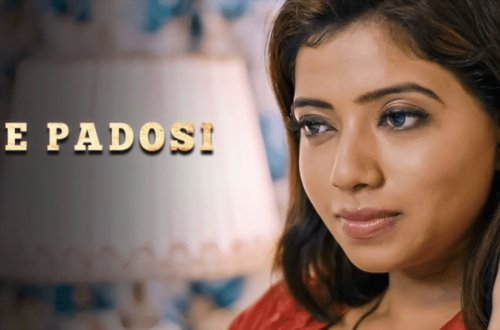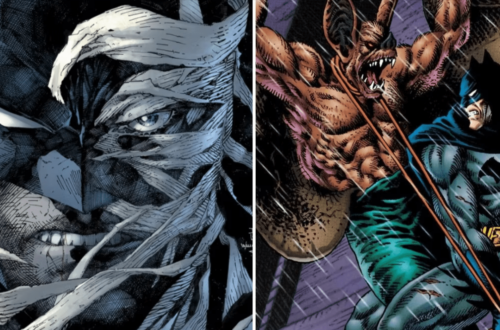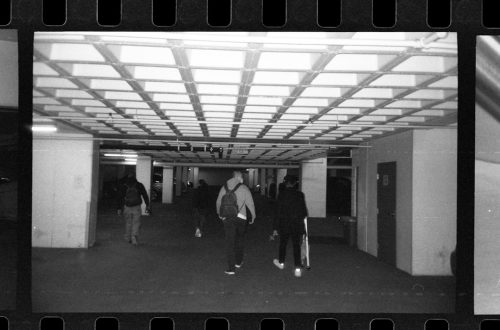Horror films have been a popular genre in the film industry for decades, captivating audiences with their ability to evoke fear, suspense, and terror. These films often explore the darker side of human nature, delving into themes of the supernatural, psychological trauma, and the unknown. The genre has evolved over time, with different sub-genres emerging to cater to various tastes and preferences. From classic monster movies to psychological thrillers, horror films have continued to push the boundaries of storytelling and filmmaking, leaving a lasting impact on audiences around the world.
Horror films often rely on a variety of techniques to create a sense of unease and terror, including atmospheric lighting, eerie sound design, and unsettling visuals. These elements work together to build tension and suspense, keeping audiences on the edge of their seats as they anticipate what will happen next. The genre also frequently explores themes of mortality, morality, and the human condition, using fear as a lens through which to examine these deeper concepts. Whether it’s a haunted house, a deranged serial killer, or a vengeful spirit, horror films tap into our primal fears and anxieties, offering a cathartic experience that allows us to confront our own mortality and the unknown.
Key Takeaways
- Horror films aim to evoke fear, disgust, and terror in the audience through the use of supernatural elements, psychological terrors, or real-life horrors.
- “The Exorcist” is a classic horror film that follows the possession of a young girl and the attempts to exorcise the demon from her.
- “The Shining” is a psychological horror film that delves into the descent into madness of a writer and his family as they stay in a haunted hotel.
- “Psycho” is a thriller that follows the story of a secretary who embezzles money and ends up at a secluded motel run by a disturbed man.
- “Halloween” is a slasher film that follows the story of Michael Myers, who escapes from a mental institution and returns to his hometown to kill.
- “A Nightmare on Elm Street” is a supernatural horror film that follows the story of a group of teenagers who are haunted in their dreams by a vengeful spirit.
- “The Conjuring” is a supernatural horror film based on the real-life experiences of paranormal investigators Ed and Lorraine Warren as they help a family terrorized by a dark presence in their farmhouse.
The Exorcist
“The Exorcist” is a classic horror film that has left an indelible mark on the genre since its release in 1973. Directed by William Friedkin and based on the novel by William Peter Blatty, the film follows the story of a young girl named Regan who becomes possessed by a demonic entity. The film’s chilling portrayal of demonic possession and its impact on the characters involved has made it a timeless classic in the horror genre. “The Exorcist” is known for its intense and unsettling scenes, including Regan’s infamous head-spinning and projectile vomiting, which have become iconic moments in horror film history.
The film’s success can be attributed to its masterful storytelling, atmospheric cinematography, and powerful performances from its cast. “The Exorcist” delves into themes of faith, doubt, and the battle between good and evil, offering a thought-provoking exploration of the supernatural. The film’s impact on popular culture is undeniable, as it has inspired countless imitations and homages in the years since its release. “The Exorcist” remains a benchmark for horror films, setting a high standard for the genre and leaving a lasting impression on audiences worldwide.
The Shining
“The Shining,” directed by Stanley Kubrick and based on the novel by Stephen King, is a psychological horror film that has become a cult classic since its release in 1980. The film follows the story of Jack Torrance, a writer who takes a job as the winter caretaker of the isolated Overlook Hotel with his family. As the hotel’s supernatural forces begin to influence Jack’s sanity, he descends into madness, putting his family in grave danger. “The Shining” is known for its haunting visuals, eerie atmosphere, and iconic performances from its cast, particularly Jack Nicholson’s chilling portrayal of Jack Torrance.
The film’s exploration of isolation, madness, and the supernatural has made it a standout in the horror genre. “The Shining” is celebrated for its meticulous attention to detail, with Kubrick’s direction creating an unsettling and claustrophobic atmosphere that lingers long after the credits roll. The film’s use of symbolism and ambiguity has sparked countless theories and interpretations among fans and critics alike, adding to its enduring legacy. “The Shining” continues to be revered as one of the greatest horror films of all time, leaving an indelible mark on popular culture and inspiring generations of filmmakers.
Psycho
| Metrics | Data |
|---|---|
| Release Date | June 16, 1960 |
| Director | Alfred Hitchcock |
| Box Office | 50 million |
| IMDb Rating | 8.5/10 |
Alfred Hitchcock’s “Psycho” is a seminal horror film that revolutionized the genre upon its release in 1960. The film follows the story of Marion Crane, who embezzles money from her employer and seeks refuge at the secluded Bates Motel, where she encounters the enigmatic Norman Bates. “Psycho” is celebrated for its groundbreaking storytelling, shocking plot twists, and iconic shower scene, which has become one of the most famous moments in film history. The film’s exploration of psychological terror and the duality of human nature has solidified its status as a classic in the horror genre.
Hitchcock’s masterful direction and innovative techniques have had a lasting impact on horror filmmaking, influencing generations of filmmakers with his use of suspense and tension. “Psycho” is also notable for its subversion of audience expectations, as it defies traditional narrative conventions and challenges viewers’ perceptions of good and evil. The film’s legacy can be seen in its enduring popularity and cultural significance, as it continues to be studied and celebrated by audiences and scholars alike. “Psycho” remains a timeless example of effective horror storytelling, showcasing the power of suspense and psychological terror in captivating audiences.
Halloween
John Carpenter’s “Halloween,” released in 1978, is a landmark in the slasher sub-genre of horror films. The film follows the story of Michael Myers, who escapes from a mental institution and returns to his hometown to terrorize a group of teenagers on Halloween night. “Halloween” is celebrated for its iconic villain, atmospheric score, and suspenseful pacing, which have made it a defining example of the slasher genre. The film’s use of tension and anticipation creates a sense of dread that permeates every scene, keeping audiences on edge as they watch Michael Myers stalk his unsuspecting victims.
Carpenter’s direction and innovative use of cinematography have had a lasting impact on horror filmmaking, influencing subsequent slasher films with its emphasis on mood and atmosphere. “Halloween” also explores themes of fear, survival, and the nature of evil, offering a thought-provoking examination of human vulnerability in the face of relentless terror. The film’s success has spawned numerous sequels and remakes, solidifying its status as a cultural phenomenon that continues to captivate audiences with its timeless scares.
A Nightmare on Elm Street

“A Nightmare on Elm Street,” directed by Wes Craven and released in 1984, introduced audiences to one of the most iconic villains in horror history: Freddy Krueger. The film follows the story of a group of teenagers who are terrorized in their dreams by Freddy Krueger, a vengeful spirit seeking retribution for his own death. “A Nightmare on Elm Street” is celebrated for its inventive premise, imaginative dream sequences, and memorable special effects that blur the line between reality and nightmare. The film’s exploration of fear and the subconscious mind has made it a standout in the horror genre.
Craven’s direction and storytelling prowess have had a lasting impact on horror filmmaking, as “A Nightmare on Elm Street” continues to be revered for its creativity and originality. The film’s use of surreal imagery and psychological terror creates an atmosphere of unease that lingers long after the credits roll. “A Nightmare on Elm Street” has spawned numerous sequels and spin-offs, solidifying Freddy Krueger as an enduring figure in popular culture. The film remains a testament to Craven’s ability to tap into primal fears and create an immersive experience that resonates with audiences.
The Conjuring
“The Conjuring,” directed by James Wan and released in 2013, is a modern classic in the supernatural horror sub-genre. The film follows the story of paranormal investigators Ed and Lorraine Warren as they assist a family plagued by malevolent spirits in their new home. “The Conjuring” is celebrated for its chilling atmosphere, effective jump scares, and compelling performances from its cast, creating an immersive experience that keeps audiences on edge throughout. The film’s exploration of supernatural phenomena and demonic possession has made it a standout in contemporary horror.
Wan’s direction and mastery of suspense have had a lasting impact on modern horror filmmaking, as “The Conjuring” has inspired a successful franchise with sequels and spin-offs that continue to captivate audiences with their scares. The film’s emphasis on character development and emotional stakes adds depth to its supernatural elements, creating a sense of investment in the characters’ plight. “The Conjuring” has solidified Wan as a leading figure in modern horror cinema, showcasing his ability to craft compelling narratives that resonate with audiences. The film remains a testament to the enduring appeal of supernatural horror and its ability to terrify audiences with its otherworldly terrors.
In conclusion, horror films have continued to captivate audiences with their ability to evoke fear, suspense, and terror through various sub-genres such as psychological horror, slasher films, supernatural horror, and more. From classic masterpieces like “The Exorcist” and “Psycho” to modern classics like “The Conjuring,” these films have left an indelible mark on popular culture while pushing the boundaries of storytelling and filmmaking. With their ability to tap into primal fears and explore deeper themes of mortality, morality, and human vulnerability, horror films continue to offer audiences an immersive experience that resonates long after the credits roll.
If you’re a fan of horror films, you might be interested in checking out this article on the top 10 scariest horror movies of all time from cheesefilm.com. This list includes classic horror films like “The Exorcist” and “Psycho” as well as more recent hits like “Hereditary” and “The Babadook.” Whether you’re a seasoned horror aficionado or just looking for a good scare, this article is sure to have some great recommendations for your next movie night.
FAQs
What are some of the best horror films of all time?
Some of the best horror films of all time include “The Exorcist,” “Psycho,” “The Shining,” “Halloween,” “The Texas Chain Saw Massacre,” “Night of the Living Dead,” “Rosemary’s Baby,” “The Silence of the Lambs,” “Get Out,” and “Hereditary.”
What makes a horror film considered the best?
A horror film is considered the best based on a combination of factors including its impact on the genre, critical acclaim, box office success, cultural influence, and lasting legacy. Additionally, a well-crafted storyline, compelling characters, and effective scares contribute to a horror film being considered the best.
Are there different sub-genres within the horror film genre?
Yes, there are several sub-genres within the horror film genre, including supernatural horror, slasher films, psychological horror, monster movies, zombie films, vampire films, and found footage films, among others. Each sub-genre has its own distinct characteristics and tropes.
What are some recent horror films that have been well-received?
Some recent horror films that have been well-received by audiences and critics include “A Quiet Place,” “Us,” “The Witch,” “It Follows,” “The Babadook,” “Midsommar,” “The Invisible Man,” “The Conjuring,” and “The Cabin in the Woods.”
Are there any classic horror films that are considered must-watches?
Yes, there are several classic horror films that are considered must-watches for any fan of the genre, including “Psycho,” “The Exorcist,” “The Shining,” “Night of the Living Dead,” “Rosemary’s Baby,” “The Texas Chain Saw Massacre,” “Halloween,” and “The Silence of the Lambs.” These films have had a significant impact on the horror genre and continue to be influential.





